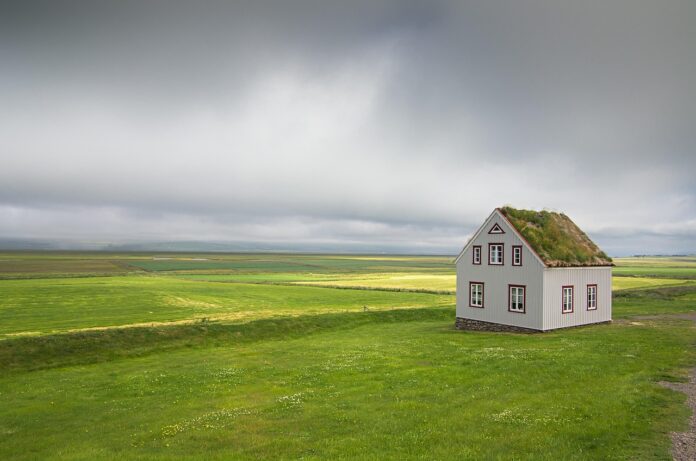Building a house in a remote location offers an exciting opportunity to create your own private sanctuary, surrounded by nature and away from the hustle and bustle of city life. Whether it’s a cabin in the woods, a mountain retreat, or a lakeside hideaway, the allure of living “off the beaten path” is undeniable. However, constructing a home in a remote area comes with unique challenges that require careful planning, preparation, and problem-solving. In this guide, we’ll explore essential tips and considerations to help you successfully build a house in a remote location.
1. Choose the Right Location Carefully
The first step in building in a remote area is selecting the perfect plot of land. Accessibility is key — consider how you will get to and from your site, especially during different seasons. Will the road be passable during winter? Is it close enough to emergency services and utilities? Also, evaluate the natural environment: look for stable ground to build on, access to water sources, and the potential for natural hazards such as flooding or landslides.
Engage a local land surveyor or expert to assess the property thoroughly. This can save you costly surprises down the line and ensure your building site is suitable.
2. Understand Local Regulations and Permits
Even in remote areas, there are often local building codes, zoning laws, and environmental regulations that you must follow. These rules may affect everything from the size and style of your house to how you manage waste and water. It’s important to contact local authorities early in the process to understand permit requirements and any restrictions.
Hiring a contractor familiar with the region’s rules can be a huge asset, as they’ll guide you through the permitting process and help keep your project compliant.
Also read: Living on the Edge: How to Stay Safe in Wildfire Zones
3. Plan for Logistics and Supply Challenges
One of the biggest hurdles in remote construction is getting materials and equipment to your site. Roads may be rough or non-existent, and suppliers might be far away, driving up transportation costs and timelines.
To minimize headaches, plan your material orders carefully. Bulk deliveries can reduce trips, but you’ll need secure storage to protect supplies from the elements and wildlife. Consider using local materials when possible; not only can this cut costs, but it also helps your house blend harmoniously with its surroundings.
4. Prioritize Energy and Water Solutions
Remote homes often lack easy access to municipal utilities, so you’ll need to think creatively about energy and water.
- Energy: Solar panels, wind turbines, and generators are popular choices for powering off-grid homes. In Utah, several reputable solar companies specialize in installing renewable energy systems tailored to remote locations. Pairing these renewable sources with battery storage systems can help provide a consistent and dependable energy supply, even in the most isolated areas.
- Water: If there’s no connection to a public water system, explore well drilling, rainwater collection, or nearby springs. Installing proper filtration and storage systems is vital to ensure clean, safe water year-round.
Waste management is another factor. Septic tanks or composting toilets are popular solutions where sewer connections aren’t available.
5. Design with the Environment in Mind
Your house should not only suit your lifestyle but also respect the natural environment. Think about orientation to maximize sunlight for warmth and natural lighting, which can reduce heating and electricity costs. Use materials and building techniques that provide insulation and durability against the local climate—whether that’s heavy snow, strong winds, or intense sun.
Incorporating passive solar design, rainwater harvesting, and natural ventilation can make your remote home more sustainable and comfortable.
6. Hire Skilled Professionals Familiar with Remote Builds
Not all builders are equipped to handle the complexities of remote construction. Look for contractors, architects, and engineers who have experience with off-grid or remote projects. Their expertise will prove invaluable in navigating logistical challenges, adapting designs to local conditions, and managing unexpected issues.
If hiring professionals isn’t an option for the entire project, consider consulting with specialists during the planning phase to ensure your design and systems are viable.
7. Prepare for Delays and Extra Costs
Remote construction almost always takes longer and costs more than building in urban or suburban areas. Weather delays, transportation issues, and limited local resources can all impact your timeline and budget.
Build some flexibility into your schedule and finances to absorb these surprises. It’s better to over-prepare than to be caught off guard halfway through your build.
8. Embrace the Rewards of Remote Living
Despite the challenges, building a house in a remote location offers unparalleled rewards. Imagine waking up to stunning views, enjoying absolute privacy, and living sustainably in tune with nature. Your home can become a true retreat—a place to recharge, create, and connect with the natural world.
Final Thoughts
Building off the beaten path is a bold and rewarding endeavor that requires careful planning, adaptability, and respect for your environment. By choosing your location wisely, understanding local regulations, planning logistics, and designing thoughtfully, you can overcome the challenges of remote construction and create a home that’s truly your own sanctuary.
Are you ready to take the leap into remote home building? With the right preparation and mindset, your dream home in the wilderness can become a reality.
